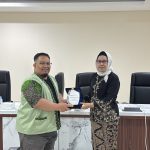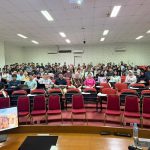Writers
Agnes Bhakti Pratiwi
Hermawati Setiyaningsih
Maarten Olivier Kok
Trynke Hoekstra
Ali Ghufron Mukti
Elizabeth Pisani
Abstract
Objectives
To analyse the relationship between health need, insurance coverage, health service availability, service use, insurance claims and out-of-pocket spending on health across Indonesia.
Design
Secondary analysis of nationally representative quantitative data. We merged four national data sets: the National Socioeconomic Survey 2018, National Census of Villages 2018, Population Health Development Index 2018 and National Insurance Records to end 2017. Descriptive analysis and linear regression were performed.
Setting
Indonesia has one of the world’s largest single-payer national health insurance schemes. Data are individual and district level; all are representative for each of the country’s 514 districts.
Participants
Anonymised secondary data from 1 131 825 individual records in the National Socioeconomic Survey and 83 931 village records in the village census. Aggregate data for 220 million insured citizens.
Primary outcome measures
Health service use and out-of-pocket payments, by health need, insurance status and service availability. Secondary outcome: insurance claims.
Results
Self-reported national health insurance registration (60.6%) is about 10% lower compared with the insurer’s report (71.1%). Insurance coverage is highest in poorer areas, where service provision, and thus service use and health spending, are lowest. Inpatient use is higher among the insured than the uninsured (OR 2.35, 95% CI 2.27 to 2.42), controlling for health need and access), and poorer patients are most likely to report free inpatient care (53% in wealth quintile 1 vs 41% in Q5). Insured patients spend US$ 3.14 more on hospitalisation than the uninsured (95% CI 1.98 to 4.31), but the difference disappears when controlled for wealth. Lack of services is a major constraint on service use, insurance claims and out-of-pocket spending.
Conclusions
The Indonesian public insurance system protects many inpatients, especially the poorest, from excessive spending. However, others, especially in Eastern Indonesia cannot benefit because few services are available. To achieve health equity, the Indonesian government needs to address supply side constraints and reduce structural underfunding.






